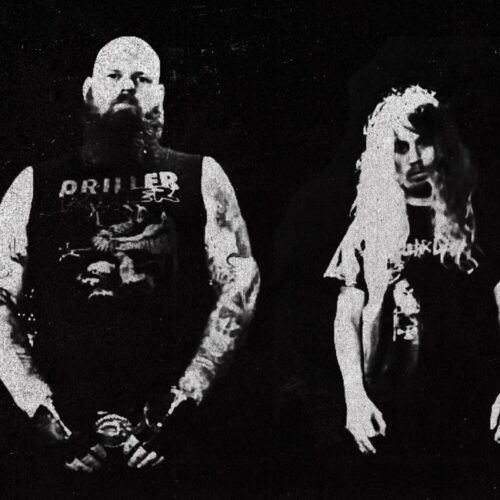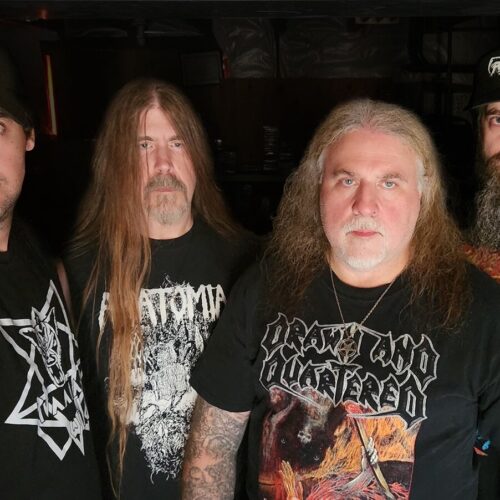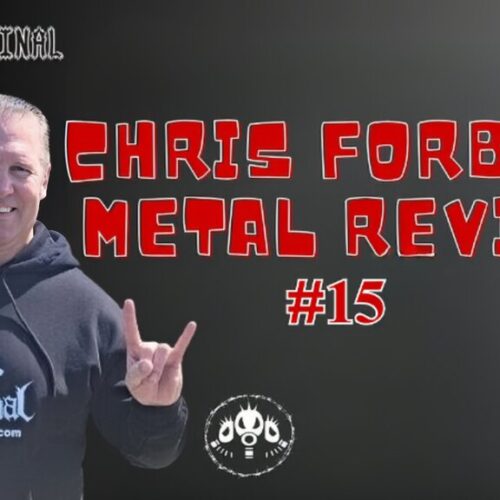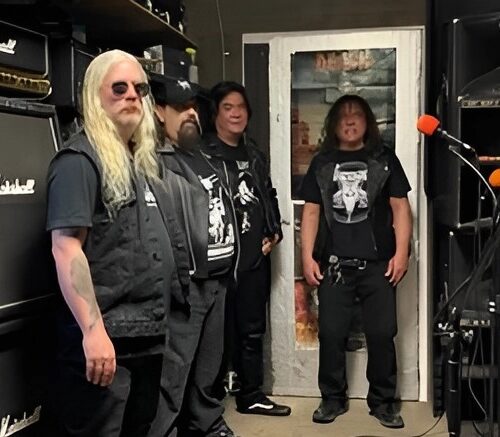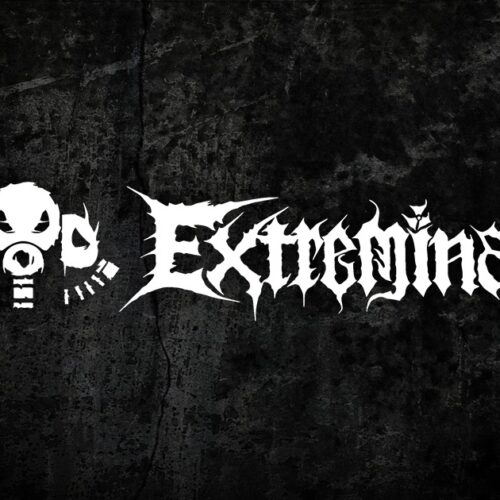Demolition: The Encyclopedia of 1980s Metal Demos Chat
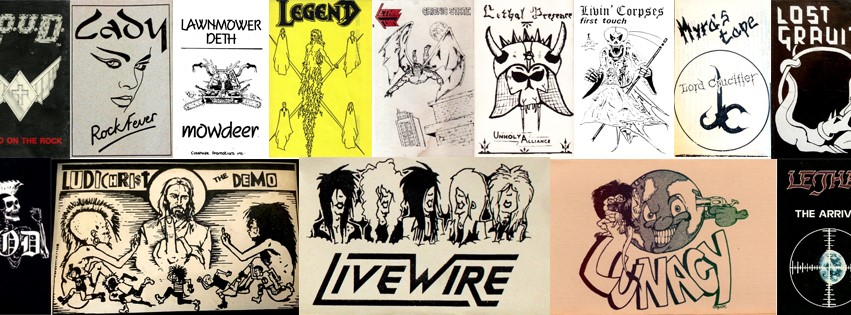
Bob Pante is working on a book called Demolition: The Encyclopedia of 1980s Metal Demos is still being worked on. Here is his story being the book and everything else I could think of:
Where were you born and where did you grow up?
BP: I was born and raised in the Rust Belt city of Troy, NY, about 150 miles up the Hudson from Manhattan, not far from the borders of Vermont and Massachusetts. My part of town at the time was what I would now call a “little Southie”—blue-collar Irish. My paternal grandmother was Irish but I’m mostly Québécois. I was a child of the ’70s and a teenager of the ’80s, with all the expected cultural touchstones, including the birth and explosion of underground metal. I had what I considered a “normal” childhood, but it wasn’t until I lived in North Carolina as a young adult that I sensed a contrast and realized how weird and idiosyncratic it was.
What sort of kid would you say you were growing up?
BP: Pretty quiet, insular. I could draw from the time I could hold a pencil, so I tended to retreat into my world. I always had friends but also spent a lot of time alone. As a teen, the metal subculture offered opportunities to connect with other like-minded outcasts and open up.
So now what was some of the early music you heard and listened to?
BP: I remember sitting at a desk as a small child, with pens and pencils and a stack of paper, listening to the AM oldies station. I was set for the evening. Later, the sounds of ’70s pop seeped in from long family vacation rides. My first record purchases were classic rock and metal like Rush, Led Zepp, and especially Sabbath, who had a massive, mind-bending impact. Then it was Priest and Maiden, and we were off to the races. All this time I was also absorbing easy listening and elevator music, plus crime jazz, spy jazz, and cop show funk, though I didn’t start actively collecting this stuff until the 1990s.
So how did you come to discover Priest and Maiden, etc?
BP: Probably a mix of word of mouth, seeing their album covers at the record store, early music videos, hearing them at parties, etc. To a 14-year-old at the time, they had a bit of danger and chaos to them, as innocuous as they might seem today. Plus, the music was great and stood in stark relief to what was going on in pop culture. I still listen to both for pleasure, mainly Priest, who I reckon had the longest run of good albums of any band in rock music, except for the Stones, arguably.
So now how did you discover the wonderful world of underground metal?
BP: It was probably an issue of Kerrang that mentioned metal zines, and then seeing a copy of Kick*Ass at the Music Shack, my local record store, and from there mailing away for a copy of Evil Attack, a photocopied zine out of Miami published by Brian Bender, who was in Seaweed with the guys from Cynic. It was a shock and a thrill, seeing all these gnarly bands and reading the descriptions of records and demos that just seemed incomprehensibly heavy and weird. The whole scene seemed like a hidden parallel world, at the same time more accessible than the rock star heights of the big bands. This was music created by local people that you could just write to, and they’d write back, thrilled to have someone into their music. You also fell in on the cresting wave of something new.
So now did end up discovering underground demos and the wonderful world of tape trading around then?
BP: I’m sure it was just writing to some of the traders listed in those early zines, at first buying tapes and then trading when I built up a list. Ed Farshtey, who is still around promoting great metal shows, was one of my earliest traders, and I did some illustration work for his zine, Book of Armageddon. Same thing with Kim August, an early member of Derkéta. I traded heavily with her and worked on her Ultimatum zine. There was also Alan Moses of Buttface zine out of Australia, Magnus Furelius of Raging Metal zine from Sweden, and Ronny Eide of Norway’s Morbid Mag. Special mention goes to Ian Christe, who I’m sure we’ll get to with later questions. I love learning every scrap of info about the earliest metal traders, and I continue to get a thrill seeing those old lists (I still have some of Ron Quintana’s crazy lists). If anyone from back then still has any, I’d love to see them.
Now after doing some trading and being like a kid in a candy store, did you seek out buying original demos at all? What are some classic demos you have original copies of?
BP: I didn’t have a lot of money as a teen, so I didn’t get a chance to order a lot of original demos. Still, some would make their way to me, as a contributor to zines who wrote to bands sometimes. While I did accumulate a cache of a few dozen originals, almost all of them have since been taped over, discarded, or traded away for other stuff. Some of my favorites that I did have originals of include Casbah’s Infinite Pain demo, Autopsy’s debut tape, and the first demo from the NYHC band Raw Deal.
So now how did you come to discover fanzines and what was it like reading some of the early ones?
BP: As mentioned above, it was likely seeing zines mentioned in Kerrang, which itself was an eye-opener, as it tended to give equal time and color pages to underground acts as it did the big bands. It was exciting to hear styles of music that, in their extremity, had not existed before these cassettes were recorded, and to know they were created by knuckleheads just like you. As an artist, I immediately started to offer illustrations and logos to many of these graphic-deprived zines, which I did for a few years.
What was the first underground metal show that you attended and did it blow you away? What club was it in if you remember?
BP: I’m from the greater Albany, NY area, and compared with larger metro areas we did not get a ton of underground metal shows. We usually had to wait for bigger, signed bands to show up in our local clubs, most notably Saratoga Winners, where I saw the likes of King Diamond and Death Angel. We did get Metallica’s first show on the Ride the Lightning tour, and bands like Trouble and Slayer played a local bar early on, but I was too young to get into these without a fake ID. Still, most of these shows were a thrill when they did come around. Seeing Voivod on the Dimension Hatross tour was a highlight. The local hardcore scene was very active, however, and I got to see most of the big bands from the New York City area. Sheer Terror was the most impactful by far. I wish my memory was better though, as many of the shows I attended have been forgotten without some kind of reminder.
So now were there any good record stores you could buy your metal stuff from and any good college radio stations you would listen to back then?
BP: Oh yeah, as mentioned above, right in my town there was a mom & pop record store (Music Shack) that stocked plenty of imports, and I’d pick up the latest Maiden 12″ singles (with the non-LP b-sides), along with new bands on European labels. I distinctly remember seeing Venom and Acid imports. There was also a cool store in nearby Albany, called Worlds Records, that stocked plenty of metal. There are a lot of colleges where I’m from, and I heard some metal shows later on, left of the dial on the college stations in the late ’80s, but early on I never even thought to look for them. However, the local classic rock station did an hour show, called The Metal Shop, every Friday around 11 pm, and I eventually became friendly with one of the DJs and would recommend stuff. I got them to play Celtic Frost’s “Eternal Summer”!
What would be your top demos of the 80’s?
BP: There are in no particular order, but here is my top 10 demos of the 80’s
Fantom Warrior/Morbid Invasion
Lethal Aggression/From The Cunt Of The Fuckin Whore
Savage Death/Crucified in Hell
Dream Death/Journey Into Mystery
Fatal Soul Burns
Sadus/Death To Posers
Violence/Self-Titled Demo
Nuclear Assault/Self-Titled Demo
Oliver Magnum/Self-Titled Demo
Revenant/Demo 1987
So now at this time or anytime after did you try and pick up an instrument or manage a band?
BP: Yep. At age 16 I was gifted a bass guitar by an uncle, and I started getting into it right away, learning to play along with Iron Maiden and Rush Records, and taking a music class at school. I got pretty good. Never really pushed the band thing, though. I only was in a cover band called Sinister, and we played at a backyard party that got busted by the cops. Much later, in the 2000s, I drifted in and out of a psychedelic Albany-based improv collective called Burnt Hills, which was fun. I sold all my instruments and equipment before moving to California but bought a classical guitar and hope to someday squeeze in some time to learn the bossa nova style.
No, never. I was happy just providing graphics. I’m not a “hustler” in that way, and I’m averse to the business world in general, only knowing what I need to know to protect myself.
So now when did you become obsessed with the underground metal scene?
BP: Probably once I got a few zines, a few demos, and some of the early LP releases. Once I was in, it was off to the races.
What were some of the early metal arena shows you went to?
BP: My very first rock concert was one of the last gigs Black Sabbath did with Ian Gillen, in March of 1984. I was lucky enough to see Iron Maiden on the Powerslave tour, with Accept opening (an epic show), Metallica with Cliff opening for Ozzy (they tore the place up), and Slayer on the Reign in Blood tour (which was like an asylum emptied into the audience). Money (and rides) were scarce in those days, so I missed a lot of shows I would have loved to see, like Metallica’s first date on the Ride the Lightning tour in a tiny local club, and Judas Priest with Maiden opening, but c’est la vie.
So now you were in deep with the underground. What were you say some of your favorite thrash bands and why?
BP: Like thousands of other underground metalheads, I was a massive Metallica and Slayer fan, to the point where every note on their first few albums has been beyond memorized and embedded into my DNA. Many of the typical bigger suspects also got plenty of play: Exodus (first two), Megadeth (also the first two), the debut Death Angel album, the first four Voivods (especially Killing Technology and Dimension Hatröss, which blew me away), and the first couple Metal Church LPs, among others (including lots of crossover debuts). When it came to demo-level groups, I was into Angel Dust (the German one), Artillery, Casbah, the UK Sabbat, Détente, Rotting Corpse, and so many others. I was also a massive fan of Hellhammer/Celtic Frost (though I consider them more death metal than thrash) and Mercyful Fate (who were about as dark and heavy as traditional metal could get without becoming thrash). Looking back, these days I’m less interested in the conventional-sounding outfits, and more in the weird groups who had a unique style or novel approach, like Messiah and Necrodeath.
So now did you ever get to meet many band members over the years and were they cool or not so cool when you met them?
BP: Not a lot. The one that stands out is Megadeth. I won a radio station “roadie for a day” contest, and a buddy and I got to hang out backstage all day at a local concert on their Peace Sells tour, with Overkill and The Necros opening. Mustaine was cranky, Ellefson was cool (and showed me some bass licks), never saw Poland, and Samuelson took off with some locals to score dope. We didn’t do much equipment lugging, it was more hanging out and swigging beers with the band. The concert that night was crazy (there’s a video of it out there), and afterward Mustaine was in character, hammered and ranting about Kirk Hammett stealing his solos for Kill ’Em All. We didn’t have a ride home so a few of us ended up “borrowing” a car from a gas station to get back. Good times.
Now tell me more about this book you mentioned to me years back. Did it ever come out and are there any copies left?
BP: The book, with the working title Demolition: The Encyclopedia of 1980s Metal Demos, is still being worked on. I started it in early 2009, and work on it almost every day. When you see the finished product, and how many bands and demos are covered it in, you’ll understand why it’s taking as long as it is. On one hand, it can be frustrating at times to have a book project take this long and you wake up at 3:00 am with opportunity cost anxiety and see many other books coming and going, but I look to examples of other long-term projects that sometimes took decades to finish, but were worth it in the end: All the Colors of the Dark, TeenBeat Mayhem, and Mind Over Matter, for example. Plus, size and scope notwithstanding, it is a pleasure to discover great, weird demos that passed me by when they were new, and to document the histories of obscure bands from the members themselves.
So what you even decide to undertake a project like this?
BP: I recently came upon some old forum posts from October of 2008 that showed I had been percolating the idea for a bit by then, even. I predicted it would only take a couple of years to write, ha. It was triggered by the band and zine listings in the back of the Swedish Death Metal book Bazillion Points, which came out that summer. I thought, Wouldn’t it be cool to see a book that covered every metal band this way, but strictly demo tapes from the ’80s? There are lots of books and websites that cover records, but very little is devoted strictly to tapes. And seeing as I was a participant in tape trading and zine publishing, I’d rather see a book from someone who was there and could understand not just dates and numbers, but history and context. On top of that, being an art director who designed books and loved them, it just seemed natural to take on.
So on a scale of 1 to 10, how far along would you say this book is coming along?
BP: I’m reluctant to assign a number, as progress on the book doesn’t always proceed linearly. But the outline has been done for a few years, and lots of reviews have been written, with the rest in different states of research. I’m constantly in contact with band members for fact-checking, and acquiring old zines I didn’t have to mine for more info. Right now we’re at about 9,000 bands and 15,000 individual demos that have been documented. It would be great to get to a nice, round summit of 10,000 bands, but that might require the inclusion of some jive-outlier sounds, like soft AOR and pomp rock.
Now with Facebook, I imagine it has been a little bit easier tracking band members down.
BP: Definitely. Though, (A) not everyone is on Facebook, (B) not everyone on there answers private messages, and (C) not everyone who answers necessarily remembers everything. That said, it’s been very helpful when it comes to band members solving mysteries and fact-checking what I have.
Do you collect fanzines at all and if so what are some mags you have?
BP: Luckily I saved all my metal zines from the ’80s, and when the book project started I began researching all the zines that were published that I didn’t have and buying up all I could afford. Now it’s to the point where I sometimes buy whole collections, resulting in an office overloaded with boxes. The crazy goal is to have a copy of every known underground metal zine. There are too many cool zines to name, but I’m especially excited when I find one that’s loaded with reviews of obscure demos, like Necronomicon from Rio de Janeiro or Metal Warriors from Germany.
So what are your thoughts on people who do print fanzines these days?
BP: I think it’s great. As a designer and former pressman, I still prefer to read print, something I can hold in my hands. That said, some current zines feel more like nostalgic flashbacks, whereas I like the ones that have the spirit of the ’80s zines, in that they are covering new sounds, and bands I’ve never heard of. They can be well-written and classy, like Convivial Hermit, or messy and gnarly, like many Southeast Asian zines, as long as they are pushing forward.
Would you even consider starting up a record label these days?
BP: I’ve had a long-running but slow-moving “bedroom” label for years, releasing cassettes, CDRs, and printed matter sporadically, mostly my stuff, but if I were to win the lottery I would start a record label, but there might be little if any metal. I just don’t see a problem for most metal bands to find an outlet somewhere. I would focus on other sounds: reissue rare Brazilian bossa nova and jazz records, unearth unreleased groovy Italian movie soundtracks, and provide a bigger platform for the best experimental/noise artists. Maybe something close to Trunk Records in England. A dream project would be to raid the Spartan Productions vaults and release a major box set covering everything Henry Mancini recorded for the Peter Gunn show. That said, if a really exciting, original album fell into my lap (something like Aluk Todolo’s Voix) I’d release it in a second.
Would you even consider starting up a record label these days?
BP: More power to ’em, though I do experience some degree of anxiety when I think about how demoralizing it must be to go from big crowds to driving 300 miles to play in front of seven people in some remote club. In a way, they remind me of avant-garde jazz musicians, who seemingly go into life saying “Starve me.” I have the utmost respect for their perseverance and dedication to their love of the craft.
What band or bands would you still like to see live?
BP: In terms of active metal bands, Abbath, Abigor, Aeternus, Antichrist (Sweden), Deceased, Earth (doing their early abstract metal sound), Nominon, Rotting Christ, Saxon, SunnO))), Voivod (again), and With the Dead would all be cool.
What band would you like to see do an entire album live tour?
BP: This has become so common that I’m not so crazy about the idea anymore. Usually, the appeal of these types of sets was the resurrection of obscurities rarely, if ever, played live. I’d rather hear a good old-fashioned mix of songs off a new album, older numbers, and a brand-new tune or two. If it’s GOOD the selection won’t matter too much.
Thoughts on the upcoming Pantera tour?
BP: Ha, don’t care in the least. Was never into that band. I’ll leave it there.
– I am gonna pick your brain over your opinion on musical styles now. (Chris)
Straight ahead no frills heavy metal?
BP: Some of my favorite stuff. It’s what I was raised on, and a lot of what I still listen to for pleasure, whether driving around or working out. Classic traditional metal bands wrote SONGS, not just riff salads. They also sequenced their albums with an ear toward dynamics, letting softer sections hold the heavier sections in relief.
I’m having a lot of fun discovering ’80s thrash metal demos that I never got around to at the time, stuff like Atrophy, Xyster, and Cardinal Sin. It’s hard to imagine now, but when thrash was new it was so mind-blowingly heavy, like nothing heard before: the speed and intensity of hardcore punk played with heavy metal precision and dynamics. Of course, standard deviation applies here as it does everywhere else: 10% of the bands were horrible, 10% were incredible, and 80% were somewhere in the middle.
Now are you a big fan of re-issued stuff? I’m talking about stuff when it’s done right, not just half-a*sed stuff and do some of these re-issues make you laugh at times?
BP: I love a good reissue, especially if attention is paid to sound quality, and the packaging is on point. I’ve picked up many demo reissues on wax, and tons of demo anthologies on CD. That said, there’s a glut of half-assed attempts, where someone mastered off of crappy MP3s and threw a low-res JPEG on the cover. Do it right or don’t bother.
How many metal fests have you attended over the years and did you enjoy them?
BP: Zero! I went to many shows in my younger days in my home area but didn’t travel much outside the area for gigs. I wish I did, but money was short. I would have loved to see the Day of Death Fest in 1990, for instance. And these days, the thought of standing in one spot for hours gives me agita, so I rarely attend gigs that don’t include seating. Time marches on.
What have been some of the hardest things putting together this book? How upset would you be if it never gets published?
BP: There are minor roadblocks, like band members not replying to information requests, or finding good graphics, as we don’t want the book to look like the old White Pages, but the overriding roadblock is the sheer size. It can be frustrating when I pause to analyze how far I’ve gotten and how far I still have to go. But there is no choice, come hell or high water the book will get done, and retain its intended integrity in comprehensiveness, design aesthetics, and (hopefully) writing quality. Believe me, worst-case scenario, I would publish it zine-style if I had to. But I’m not worried about it. Ian and I both know heavy shit takes longer.
When would you like to see it released?
BP: As soon as possible!
Do you have a cover ready for the book and a title?
BP: The working title is DemoLition: The Encyclopedia of 1980s Metal Demos, but that could change. We do have a cover idea, but I’ll keep that under wraps, as it may also change. I have lots of ideas for the look of the book, but it’s still fluid.
How many pages do you think it will be?
BP: Hard to say right now, but no doubt in the hundreds. Maybe more?
Are there many bands that you are having a hard time contacting?
BP: Mainly the big bands who are probably inundated with interview requests and general fan correspondence, and many obscure bands who are seemingly off the grid. There are also quite a few groups who hid behind pseudonyms that we have yet to crack. In a perfect world, I would hear from everyone, but the return rate is pretty good, so I can’t complain. I’m getting a LOT of info that is generally not out there. Some bands have never been contacted by anyone and are thrilled to discuss their old projects.
Any links you care to share with the readers?
BP:
DemoLition Facebook page:
https://www.facebook.com/demolitionbo
Demo want list:
https://demolitionbook.blogspot.com
Well, horns up for doing this chat, and best of luck with the book. Any last words to wrap this up?
BP: Chris, it’s been an honor to have my brain picked by a fellow graybeard metal vet. How can I forget to draw the cover for the second issue of your zine back in 1987? (Actually, I forgot about it until I saw it on eBay in the early 2000s!) I appreciate your interest, and I hope your readers enjoyed the interview. I’m working to make the book as best it can be for folks like them! STAY HEAVY.


